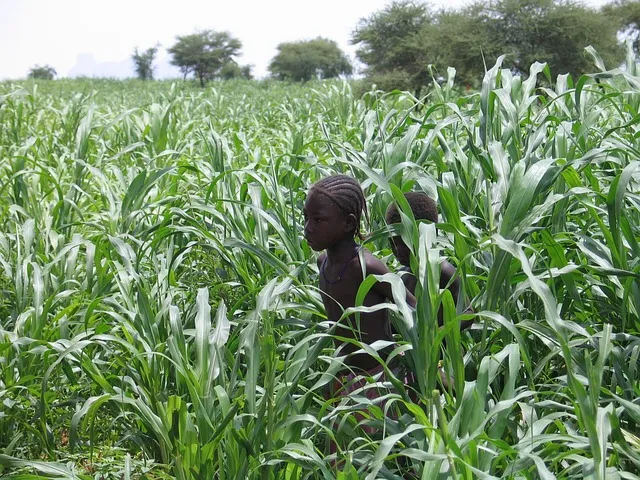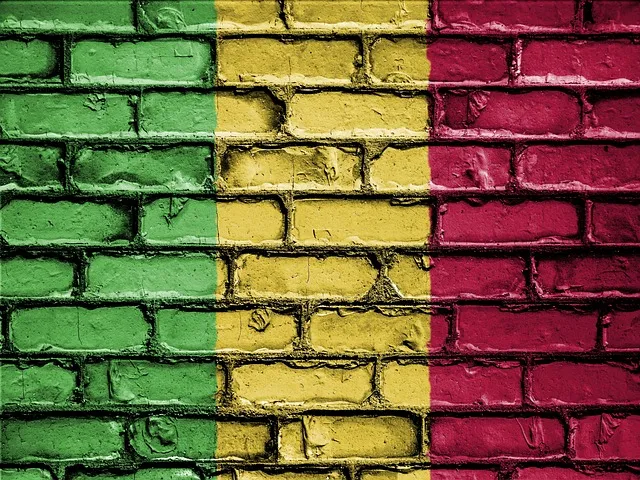Fun Facts About Mali

Mali is a West African country located in the Sahel region of the continent. It is known for its cultures, beautiful landscapes, and rich history. It is home to the Dogon people, an ethnic group who have maintained their traditions and beliefs since ancient times. Mali is a country with a lot to offer, and there are plenty of fun facts to learn about the country. From its national parks to its exotic cuisine, Mali has a lot of interesting stories to tell. Read on to discover some of the most interesting and fun facts about Mali.
Discover the Fascinating Culture of Mali
Mali is a West African country that is known for its ancient culture. Located in the Sahara Desert, Mali is home to a population of over 18 million people and is one of the poorest countries in the world. Despite this, Mali has a rich culture that has been shaped by its diverse ethnic groups, religions, and geography.
The dominant culture of Mali is the Bambara, which is closely related to the Mande languages of West Africa. Other ethnic groups in Mali include the Fula, Songhai, Tuareg, and Bozo. These ethnic groups have all contributed to the culture of Mali, bringing their own unique customs and beliefs.
Religion plays a major role in Mali’s culture. Islam is the dominant religion, with over 90% of the population identifying as Muslim. Christianity and traditional African religions are also practiced.
Music is a prominent part of Mali’s culture. The traditional music of Mali includes the djembe, a drum used in many ceremonies and dances. Music is used to celebrate weddings, births, and other important occasions.
The cuisine of Mali is also very diverse and flavorful. Rice is the staple food, but there are many other dishes that are made with local ingredients, including couscous, millet, peanuts, and vegetables.
Mali is also known for its traditional arts and crafts. Leatherwork, weaving, and wood carving are all popular arts, and can often be found in markets throughout the country.
Mali’s culture is a mix of the ancient and the modern. Its people are resilient and welcoming, and its culture is full of color and life. Visiting Mali is a great way to experience its unique culture firsthand.
The Amazing History of Mali

Mali is a West African country that is home to a rich and diverse history. From its earliest days, the region that is now Mali has been a place of cultural exchange and innovation.
The earliest inhabitants of the region were the Bambara people, who lived around the Niger River. They developed a sophisticated culture and traded with the peoples of the surrounding regions. The Bambara were particularly skilled in metalworking and iron-making, and they developed an extensive trading network across West Africa.
During the 11th and 12th centuries, the region was conquered by a number of different empires, including the Mali Empire, the Songhai Empire, and the Ghana Empire. These empires brought Islam to the region and set up trading posts along the Niger River.
In the 13th century, the Mali Empire rose to prominence and established its capital at Timbuktu. Timbuktu was a center for learning and the development of an Arabic writing system. The Mali Empire also developed an elaborate system of government and taxation.
Mali’s history was further enriched by the Tuareg people, who migrated into the region in the 16th century. The Tuareg brought with them their own language, customs, and literature. They established oases in the desert regions, and they were renowned for their skill in weaving, metalworking, and leatherwork.
Mali’s history has been shaped by the many different groups that have lived in the region. This history has been preserved in artifacts, written documents, and oral histories that tell of the great civilizations that have come and gone in the region. Today, Mali is a country that celebrates its history and culture.
Explore the Unique Cuisine of Mali
Mali is a West African country with a culture that can be seen in its cuisine. As one of the oldest countries in Africa, Mali has developed a range of traditional dishes that draw from the nation’s many ethnic groups. These dishes are characterized by the use of spices, meats, and vegetables, resulting in flavors that are both savory and sweet.
The most prominent dish in Mali is the jollof rice. This is a one-pot dish that is made with tomatoes, onions, garlic, and other spices. The dish is often served as a main course and is accompanied by a variety of side dishes such as fried plantains, fried fish, or a salad.
Another popular dish is the tigadigui, which is a stew made with peanut butter, onions, tomatoes, and other spices. This dish is often served with a side of couscous or rice.
The people of Mali also enjoy eating soups and stews. One of the most popular is mafe, a stew made with beef, tomatoes, and peanuts. It is typically served with white rice or millet.
In addition to these savory dishes, Mali also has a range of sweet treats. A favorite is the makouda, a fried dough ball served with a sweet syrup or jam. Another popular sweet is the riz bi haleeb, a rice pudding served with a topping of nuts and raisins.
The cuisine of Mali is as diverse as its culture, and its flavors are sure to delight any palate. Whether you’re looking for a savory stew or a sweet treat, you can find it in Mali.
Delve Into the Rich Music of Mali

Mali is a West African nation with a long-standing musical tradition. Music is an integral part of Malian life, and it plays an important role in society. Malian musicians are renowned for their skill and creativity, and the country has produced some of the most influential musicians in Africa.
Malian music is mainly vocal and instrumental. Traditional Malian music features a variety of instruments, including the ngoni (a plucked lute), the djembe (a hand drum), and the balafon (a wooden xylophone). These instruments are used to create complex rhythms and melodic structures. Traditional music also features vocal styles such as call-and-response singing and improvised soloing.
Malian music has been influenced by other African and international styles, including Afrobeat, Highlife, and Reggae. These influences have helped create a unique sound that is distinctly Malian.
Popular Malian musicians include Ali Farka Touré, Salif Keita, and Oumou Sangaré. Touré, often called the “King of the Desert Blues,” was a Grammy-winning guitarist and singer-songwriter known for his distinctive guitar playing and his use of traditional instruments. Keita is an internationally acclaimed singer-songwriter whose music combines traditional African rhythms and melodies with modern pop styles. Sangaré is a Grammy-nominated singer-songwriter who has been described as the “Songbird of Wassoulou” for her powerful, passionate vocals.
Malian music is a rich and vibrant tradition, and its influence can be heard in the music of many other African countries. Whether you’re a fan of traditional music or contemporary pop, Mali has something to offer.
The Amazing Landscapes of Mali

Mali is an incredible West African nation, home to a myriad of beautiful landscapes. From the lush green plains of the Niger River Valley to the vast desert region of the Sahara, Mali’s natural beauty is breathtaking.
The nation’s capital, Bamako, is nestled between the Niger River and the Bandiagara Escarpment and is known for its markets, traditional architecture, and nightlife. It is also the gateway to many of Mali’s most impressive attractions.
The Bandiagara Escarpment, also known as the Dogon Plateau, is an awe-inspiring sandstone cliff that stretches for miles across the eastern part of the country. This landscape is home to some of the best-preserved Dogon villages in the world, with their traditional architecture and colorful art.
The Sahara Desert makes up the northern part of Mali and is the world’s largest desert. Here, you can explore its vast dunes, towering sandstone formations, and hidden oases. The desert is also home to a variety of wildlife, including the endangered Saharan cheetah and the critically endangered Saharan addax antelope.
The Niger River Valley is one of the most fertile regions in all of Africa, and its lush green plains are a paradise for nature lovers. Here, you can find some of the most diverse wildlife in the continent, including chimpanzees, elephants, and hippopotamuses.
Finally, the inland delta of the Niger River is home to a variety of bird species, including the rare and endangered African skimmer.
Mali is a country full of culture, history, and fun facts. From its incredible cultural and religious heritage to its rich wildlife and stunning landscapes, Mali is an incredible place to visit. With a population of over 18 million people, Mali is a culturally diverse country that offers a wealth of experiences. It is a great place to learn about the history and culture of West Africa, and it is home to some of the most amazing places in the world.
If you liked our article Fun facts about Mali, you might also like Fun facts about Niger.